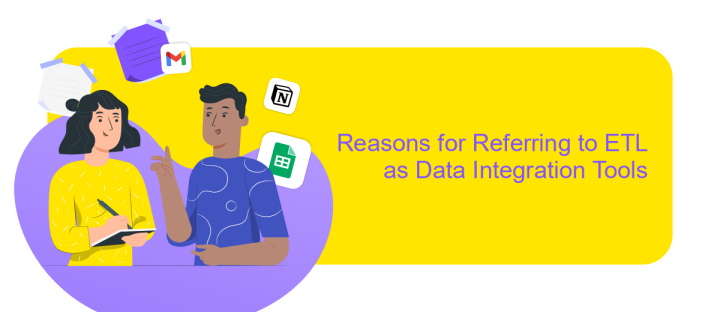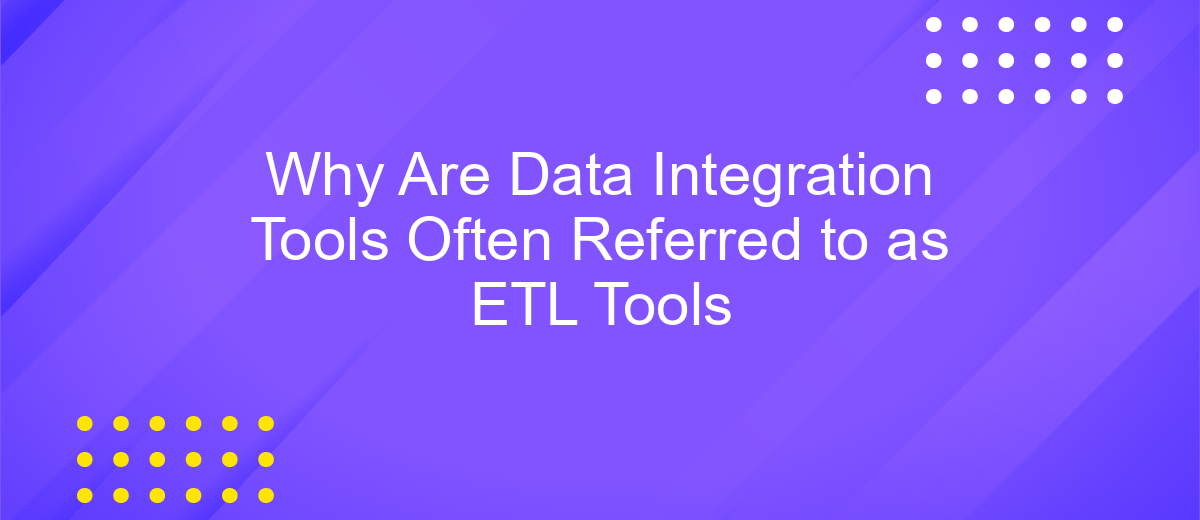Why Are Data Integration Tools Often Referred to as ETL Tools
Data integration tools are crucial for businesses aiming to consolidate information from various sources. Often referred to as ETL (Extract, Transform, Load) tools, these solutions streamline the process of extracting raw data, transforming it into a usable format, and loading it into a target system. This article explores why ETL has become synonymous with data integration tools.
Introduction
Data integration is a critical process in modern business environments, allowing organizations to consolidate information from various sources into a unified view. This process is essential for making informed decisions and ensuring data consistency across different platforms. One of the most common methods for achieving data integration is through ETL (Extract, Transform, Load) tools, which are often synonymous with data integration tools.
- Extract: This step involves retrieving data from different sources, such as databases, APIs, and flat files.
- Transform: The extracted data is then transformed to fit the operational needs, which may include data cleaning, normalization, and aggregation.
- Load: Finally, the transformed data is loaded into a target system, such as a data warehouse or a business intelligence platform.
ETL tools like ApiX-Drive simplify the data integration process by offering user-friendly interfaces and automated workflows. These tools help businesses seamlessly connect various data sources, ensuring that data is consistently updated and readily available for analysis. By leveraging ETL tools, organizations can enhance their data management capabilities and drive more accurate, data-driven decisions.
Understanding Data Integration

Data integration is a critical process that involves combining data from different sources to provide a unified view. This process is essential for businesses that need to consolidate information from various systems to make informed decisions. Effective data integration ensures that data from disparate sources is accurate, consistent, and accessible, thereby enabling organizations to gain comprehensive insights and improve operational efficiency.
One of the tools that facilitate seamless data integration is ApiX-Drive. ApiX-Drive offers a user-friendly platform that allows businesses to connect various applications and automate data flows without requiring extensive technical expertise. By leveraging such integration services, companies can streamline their data management processes, reduce manual errors, and save valuable time. Whether it’s syncing customer data from a CRM system to a marketing platform or consolidating sales data from multiple channels, ApiX-Drive provides a reliable solution to meet diverse data integration needs.
Role of ETL Tools in Data Integration

ETL (Extract, Transform, Load) tools play a crucial role in the data integration process by streamlining the movement and transformation of data from various sources into a unified destination. These tools are essential for organizations looking to consolidate data from disparate systems for analysis, reporting, and decision-making.
- Extraction: ETL tools pull data from multiple source systems, which can include databases, cloud services, and applications.
- Transformation: The extracted data is then cleaned, enriched, and transformed into a suitable format for analysis or further processing.
- Loading: Finally, the transformed data is loaded into a target system, such as a data warehouse or a data lake, for easy access and analysis.
One of the services that help streamline this process is ApiX-Drive, which offers seamless integration capabilities. ApiX-Drive simplifies the setup of data pipelines by providing a user-friendly interface and robust connectors to various data sources, ensuring that data integration is both efficient and reliable. This makes ETL tools indispensable in modern data-driven environments.
Reasons for Referring to ETL as Data Integration Tools

ETL (Extract, Transform, Load) tools are often synonymous with data integration tools due to their fundamental role in the process of consolidating data from various sources into a unified, cohesive system. These tools are essential for businesses that need to process large volumes of data from different databases, applications, and systems.
The primary reason for this association is that ETL tools streamline the complex process of data integration by automating the extraction of data from multiple sources, transforming it into a consistent format, and loading it into a target database or data warehouse. This automation not only saves time but also ensures data accuracy and consistency.
- Automated data extraction from diverse sources
- Consistent data transformation processes
- Efficient data loading into target systems
- Improved data accuracy and consistency
Services like ApiX-Drive further simplify data integration by offering user-friendly interfaces and pre-built connectors for various applications and databases. This allows businesses to set up integrations quickly and efficiently, without the need for extensive technical expertise. As a result, ETL tools and services like ApiX-Drive are indispensable for modern data management strategies.
Conclusion
In conclusion, data integration tools, often referred to as ETL tools, play a crucial role in modern data management by Extracting, Transforming, and Loading data from various sources into a unified system. These tools streamline the process of data consolidation, ensuring that businesses can make informed decisions based on accurate and up-to-date information. They are essential for maintaining data integrity and enhancing operational efficiency across different departments.
Moreover, services like ApiX-Drive offer seamless integration capabilities, allowing businesses to automate data workflows without the need for extensive coding knowledge. By leveraging such platforms, organizations can quickly set up and manage their data integration processes, ensuring that their data is always synchronized and accessible. This not only saves time and resources but also empowers businesses to focus on their core activities while maintaining a robust data infrastructure.
FAQ
Why are data integration tools often referred to as ETL tools?
What are the main components of ETL?
How does ETL differ from ELT?
Why is data transformation important in ETL processes?
What are some common use cases for ETL tools?
Time is the most valuable resource in today's business realities. By eliminating the routine from work processes, you will get more opportunities to implement the most daring plans and ideas. Choose – you can continue to waste time, money and nerves on inefficient solutions, or you can use ApiX-Drive, automating work processes and achieving results with minimal investment of money, effort and human resources.

